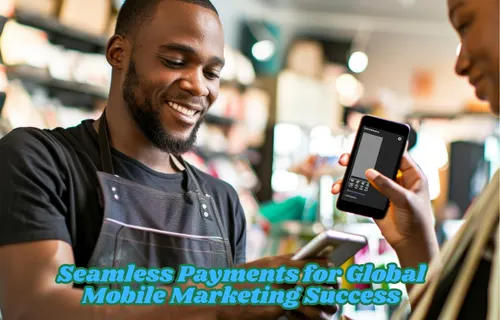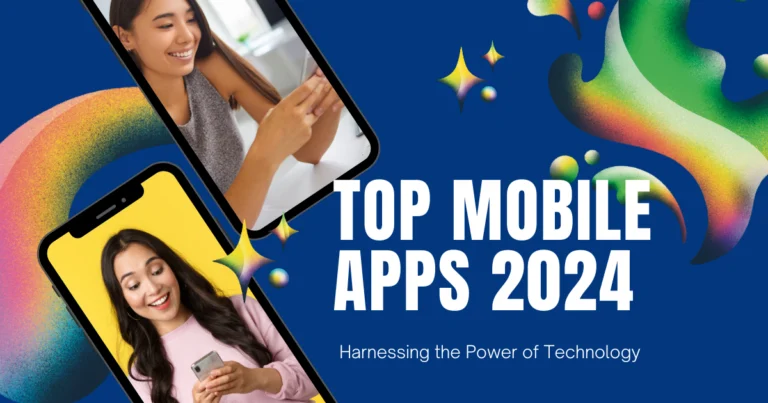Top Mobile Payment Platforms for App Success

In today’s mobile-centric world, mobile marketing apps have become essential tools for businesses looking to engage their customers and drive growth. From enabling in-app purchases to managing subscriptions, mobile marketing apps must offer seamless payment experiences to ensure maximum conversions. One key aspect that can make or break the success of these apps is the integration of mobile payment platforms.
Efficient mobile payment platforms enable smooth, secure, and fast transactions, enhancing customer trust and satisfaction. In this comprehensive article, we will dive into the benefits of integrating the right payment platform, explore leading solutions, and understand how these platforms are pivotal in boosting app revenue and user engagement.
Table of Contents
Payment Platforms and Their Role in Mobile Marketing Apps
A payment platform is a technology solution designed to facilitate secure financial transactions between businesses and consumers. It ensures that payments made via various channels, including credit cards, mobile wallets, and bank accounts, are processed securely. Payment platforms not only ensure that transactions are encrypted and verified but also offer additional features such as fraud protection and analytics.
In the world of mobile marketing apps, payment platforms are vital for creating a frictionless user experience. Whether users are purchasing products, subscribing to services, or making one-time transactions, the payment platform ensures that the process is seamless. A well-integrated payment solution is critical to keeping users engaged and avoiding potential issues like abandoned carts or failed transactions.
Moreover, payment platforms can provide valuable insights into transaction data, which can help developers and marketers understand user behavior, enabling them to optimize monetization strategies and grow their customer base.

Key Features of Mobile Payment Platforms
Choosing the right payment platform involves considering several important features to ensure seamless functionality within your app:
1. Security and Compliance
Payment platforms must adhere to strict security standards to protect sensitive user information. Compliance with the Payment Card Industry Data Security Standard (PCI DSS) is crucial for maintaining user trust. Encryption, tokenization, and fraud detection are vital features for safeguarding user data.
“Security is not just an option but a necessity for any mobile app that deals with financial transactions.” (source: PCI Security Standards Organization).
2. Mobile Optimization
Since the target audience uses mobile devices, payment platforms must be optimized for mobile use. This includes easy navigation, quick transactions, and support for mobile-specific payment methods like Apple Pay and Google Pay.
Mobile optimization also means ensuring compatibility with mobile biometric authentication, such as Face ID and fingerprint scanning, which provide an additional layer of security and convenience.
3. Multi-Currency and Global Payment Support
For apps with a global user base, supporting multiple currencies is a necessity. Payment platforms like Stripe and PayPal offer automatic currency conversions, enabling users to pay in their preferred currency without complications.
4. Recurring Payments and Subscription Management
For subscription-based mobile apps, seamless recurring billing is key to customer retention. Platforms like Braintree and Chargebee handle automatic renewals, sending notifications to users about billing cycles, and ensuring uninterrupted access to services. This feature reduces churn and enhances the user experience by providing smooth subscription management.
With mobile subscription models growing by over 30% in 2022, particularly in media and fitness apps, the ability to manage recurring payments efficiently has become critical.
5. Multiple Payment Methods
The ability to offer various payment methods—such as credit cards, digital wallets, and peer-to-peer payment systems—gives users more flexibility in choosing how they want to pay. Supporting digital wallets for mobile apps, like Apple Pay and Google Pay, has been shown to reduce friction during the checkout process, boosting conversions.
Leading Mobile Payment Platforms
1. Stripe
Stripe is one of the most popular mobile payment platforms , known for its flexibility and developer-friendly APIs. It offers multi-currency support, seamless integration with mobile SDKs, and advanced security features, making it suitable for both small businesses and global enterprises.
- Key Features: Real-time reporting, customizable APIs, PCI compliance, and subscription billing support.
- Use Case: A subscription-based fitness app uses Stripe to manage global payments and recurring billing. With Stripe’s multi-currency support, users from different regions can subscribe to premium content in their local currency without any hassle.
2. PayPal
PayPal is a household name in the payments space, providing reliable solutions for mobile apps. It supports various payment methods, including peer-to-peer transactions, credit/debit cards, and digital wallets. PayPal is also integrated with mobile-first platforms, allowing for smooth in-app payments.
- Key Features: Multi-currency support, mobile-optimized payments, fraud detection, and buyer protection.
- Use Case: A retail app offering international shipping integrates PayPal, allowing users from different countries to make purchases securely and easily. PayPal’s user-friendly interface and global reach make it an excellent choice for mobile commerce apps.
3. Braintree
As a subsidiary of PayPal, Braintree offers extensive features for mobile marketing apps that require more advanced functionality, such as in-app payments, subscription billing, and support for digital wallets. It integrates seamlessly with Apple Pay and Google Pay, providing a fast and secure checkout experience.
- Key Features: Advanced fraud detection, global payment support, digital wallet integration, and recurring billing.
- Use Case: A media streaming app uses Braintree to manage recurring subscriptions and one-time purchases. With Braintree’s robust integration with digital wallets, users can subscribe to premium services with just a few taps, enhancing the overall experience.
“Braintree’s flexibility in supporting multiple payment methods has revolutionized mobile app transactions, allowing businesses to offer more options to users.” (source: braintree ).
4. Square
Square’s payment solutions are well-known for their versatility, providing a full suite of payment services for mobile marketing apps and in-store transactions. Its mobile SDK is easy to integrate, enabling developers to embed payment functionality directly within the app.
- Key Features: In-app payments, POS integration, mobile-optimized interface, and multi-payment method support.
- Use Case: A restaurant app uses Square to facilitate online orders and payments within the app, while also integrating the platform with its in-store payment system, creating a unified user experience across multiple touchpoints.

Challenges in Integrating Payment Platforms into Mobile Apps
1. Security Concers
Payment platforms need to ensure robust security to protect sensitive financial data. Mobile marketing apps are often targeted by hackers, so encryption, fraud detection, and secure authentication methods are essential.
2. User Experience
A complicated payment process can frustrate users, leading to cart abandonment. Offering simplified and user-friendly payment flows, such as one-tap payments or biometric authentication, helps reduce friction and increases conversions.
3. Global Compliance and Regulatory Challenges
Handling transactions globally requires compliance with various regulations, such as GDPR in Europe and PCI DSS standards worldwide. Businesses must ensure that their payment platform complies with these regulations to avoid penalties and ensure a seamless international payment experience.
4. Recurring Billing Management
Managing recurring payments can be a challenge, especially if there are multiple tiers or subscription models within the app. Platforms like Chargebee or Braintree can simplify this by offering automatic reminders and seamless payment processing for subscriptions.
The Growth of Mobile Payments
According to industry reports, mobile payments are projected to reach $6 trillion globally by 2024, driven largely by mobile wallet adoption and in-app purchases. Additionally, in-app purchases now account for nearly 48% of app revenue, showing a clear shift toward mobile-first payment solutions.
Conclusion
The success of mobile marketing apps is increasingly reliant on the integration of efficient, secure, and user-friendly payment platforms. Solutions like Stripe, PayPal, Braintree, and Square offer robust functionality, global reach, and multi-payment support, making them ideal for businesses looking to optimize their mobile app payment systems.
By focusing on security, mobile optimization, and user experience, businesses can not only boost conversions but also build lasting trust with their customers. As mobile payments continue to grow, integrating the right payment platform will be a crucial factor in determining the overall success of any mobile marketing app.







2 Comments
Comments are closed.